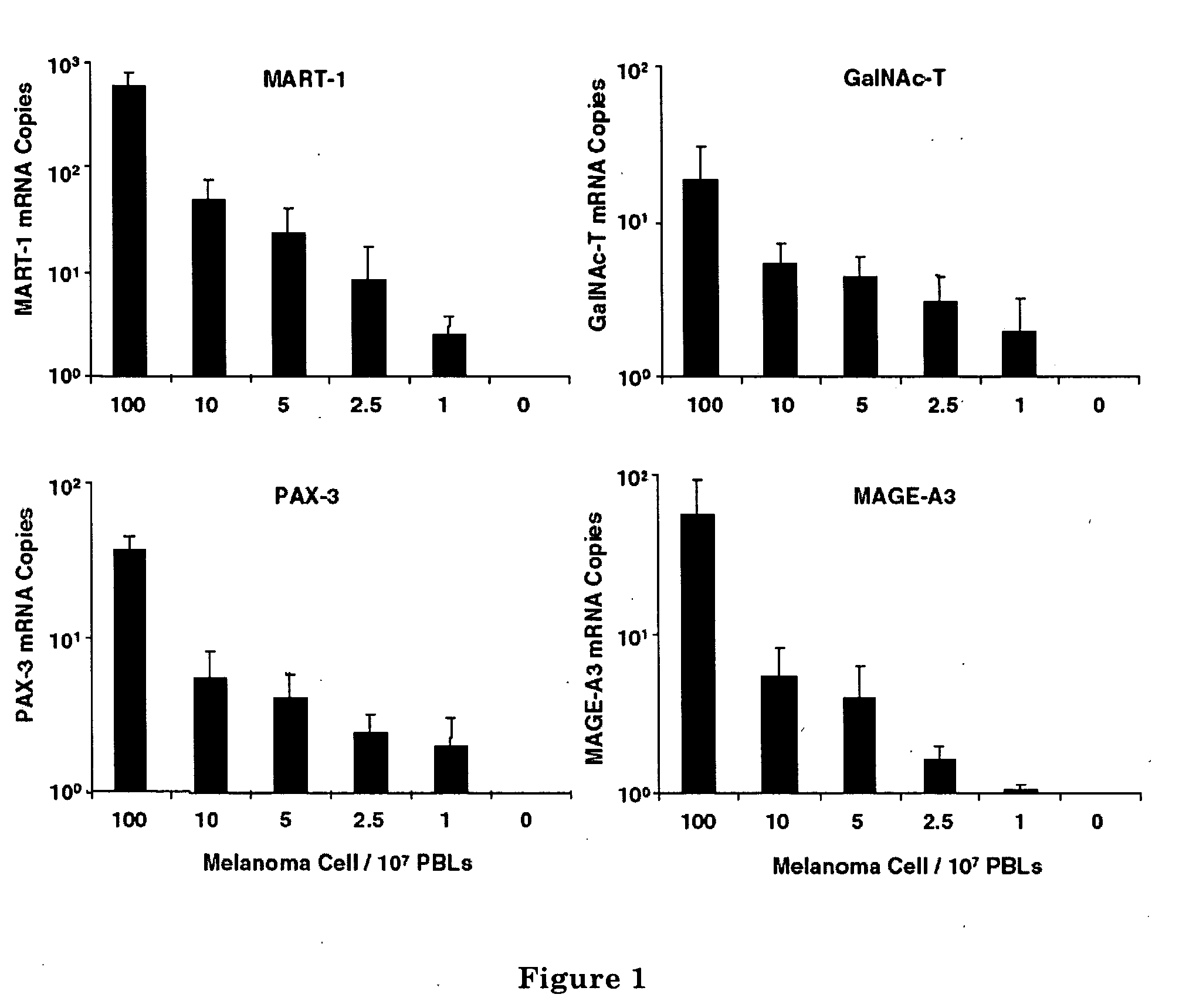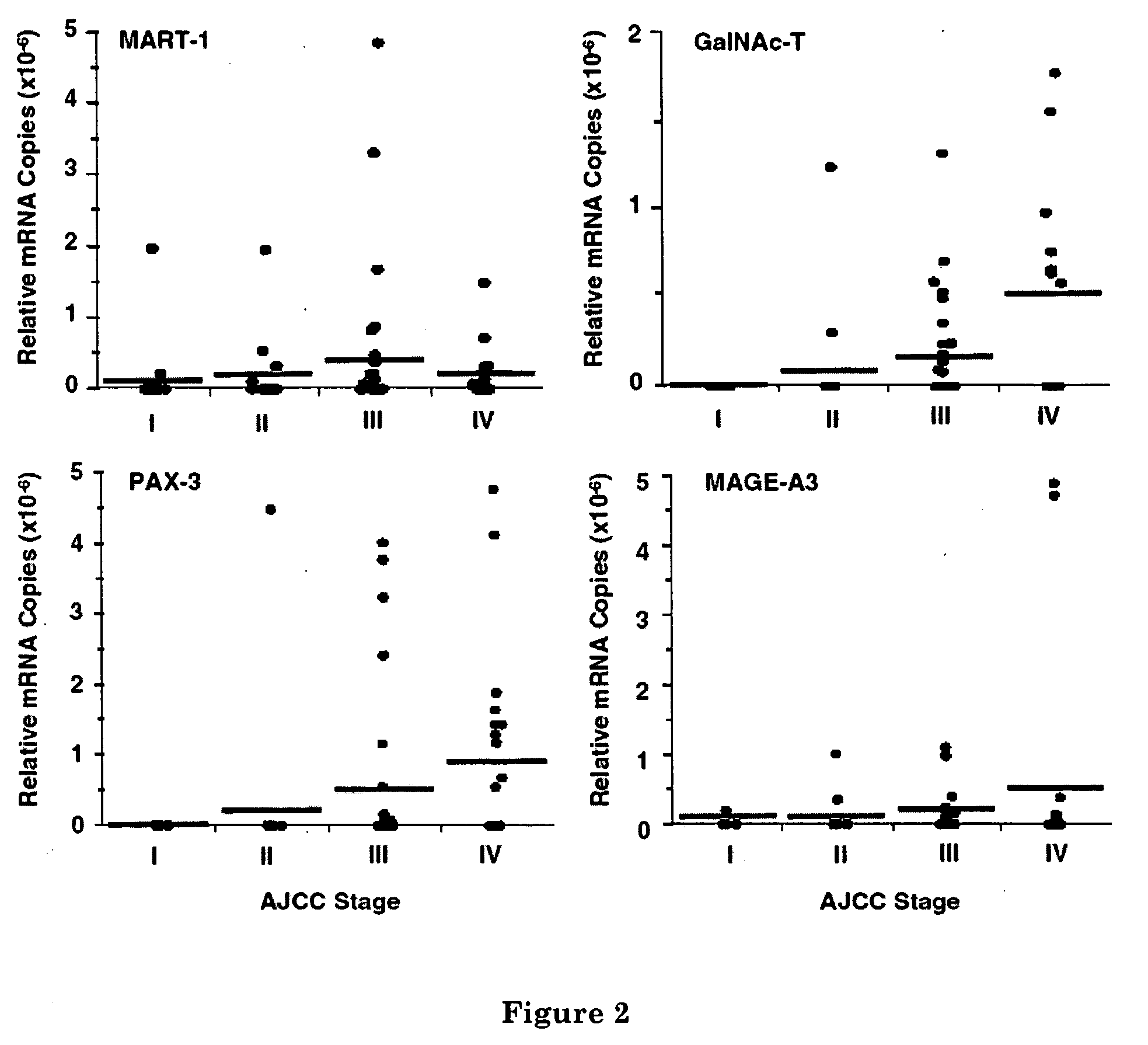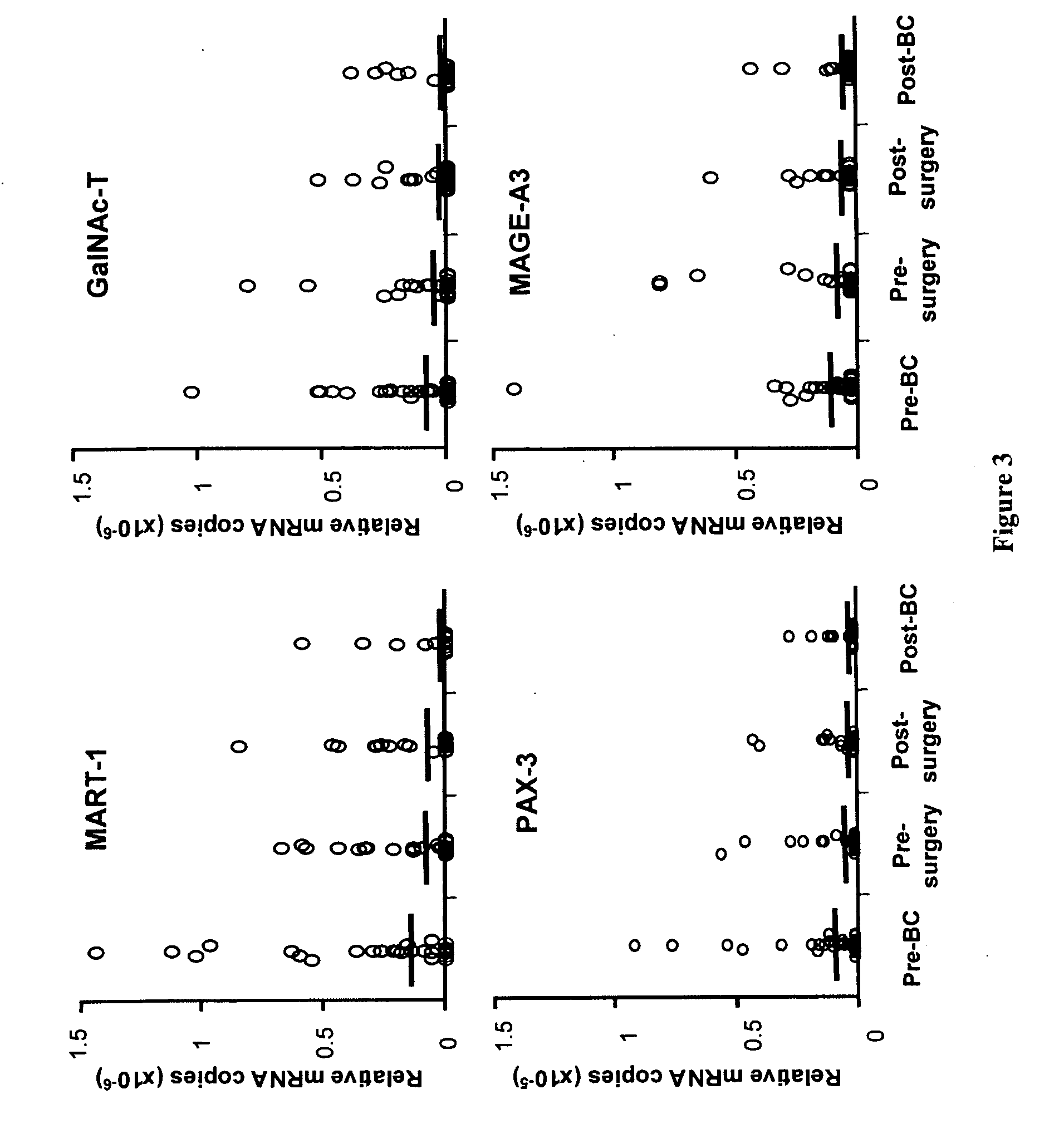Detection of cancer cells in body fluids
- Summary
- Abstract
- Description
- Claims
- Application Information
AI Technical Summary
Benefits of technology
Problems solved by technology
Method used
Image
Examples
example 1
Multimarker Quantitative Real-Time PCR Detection of Circulating Melanoma Cells in Peripheral Blood: Relation to Disease Stage in Melanoma Patients
MATERIALS AND METHODS
[0085] Seventeen melanoma cell lines (MA, MB, MC, MD, ME, MF, MG, MH, MI, MJ, MK, ML, MM, MN, MO, MP, and MQ) were established and characterized at the John Wayne Cancer Institute (JWCI). Cells were grown in RPMI 1640 containing 100 mL / L heat-inactivated fetal calf serum and 10 g / L penicillin / streptomycin (Gibco) in a T75-cm2 flask and were used when they reached 70%-80% confluence.
Patients
[0086] All patients enrolled in the study had documented physical and medical histories, and their AJCC stage of disease was determined and recorded at the time of blood drawing. Blood was drawn from 94 melanoma patients (20 with stage I, 20 with stage II, 32 with stage III, and 22 with stage IV disease) immediately before they received any treatment at JWCI. All patients signed consents for the use of their...
example 2
Serial Monitoring of Circulating Melanoma Cells during Neoadjuvant Biochemotherapy for Stage III Melanoma: Outcome Prediction in a Multicenter Trial
PUM
| Property | Measurement | Unit |
|---|---|---|
| Time | aaaaa | aaaaa |
| Fraction | aaaaa | aaaaa |
| Fraction | aaaaa | aaaaa |
Abstract
Description
Claims
Application Information
 Login to View More
Login to View More - R&D
- Intellectual Property
- Life Sciences
- Materials
- Tech Scout
- Unparalleled Data Quality
- Higher Quality Content
- 60% Fewer Hallucinations
Browse by: Latest US Patents, China's latest patents, Technical Efficacy Thesaurus, Application Domain, Technology Topic, Popular Technical Reports.
© 2025 PatSnap. All rights reserved.Legal|Privacy policy|Modern Slavery Act Transparency Statement|Sitemap|About US| Contact US: help@patsnap.com



